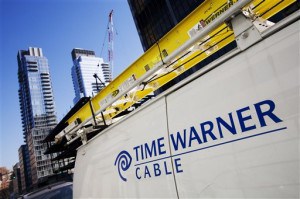 Verizon Wireless will force customers off of their grandfathered unlimited data plans when they reach the end of their current two-year service contracts, according to the company’s chief financial officer.
Verizon Wireless will force customers off of their grandfathered unlimited data plans when they reach the end of their current two-year service contracts, according to the company’s chief financial officer.
It is all part of the cell phone company’s strategy to boost the average bills of customers with new, more expensive tiered family-shared data plans. With a significant number of current customers grandfathered on unlimited data plans that users likely will not forfeit voluntarily, Verizon will force the issue as customers come up for contract renewal.
The plan received considerable approval at today’s JPMorgan Chase TMT conference, a gathering for Wall Street investors and tech companies like Verizon. Executive vice-president and chief financial officer Fran Shammo laid out the plan to switch customers to forthcoming family “data share” plans that are priced based on anticipated usage:
As you come through an upgrade cycle and you upgrade in the future, you will have to go onto the data share plan. And moving away from, if you will, the unlimited world and moving everybody into a tiered structure data share-type plan.
So when you think about our 3G base, a lot of our 3G base is unlimited. As they start to migrate into 4G, they will have to come off of unlimited and go into the data share plan. And that is beneficial for us for many reasons, obviously. So as you pick what tier you want to be and we think that there will be some price up in those tiers.
“Price up” is code language for bill hiking. Customers adopting family share plans may be able to share data across a larger number of devices, but at consumption pricing, many customers will find their Verizon bills substantially higher than before.

Shammo
“And the important part of that is we want the connections to come in and the way we have designed our plan, this plan is built on tiers and as we look at the future growth of LTE consumption because of the speeds and video consumption and consumption of other M2M-type devices, it is going to be more important that people will start to upgrade in their tiers as they start to really realize the benefits of the LTE network,” Shammo said. “As [customers] add more devices, they are going to have to buy up into tiers. So again, you will see the revenue increase there.”
Those revenue predictions were not sufficient to satiate Phil Cusick, an analyst at JPMorgan Chase. He questioned Shammo about the prospects for Verizon further increasing revenue with across-the-board rate increases on service plans.
Shammo would not commit to that, but was pleased with the lack of customer protests over their recent introduction of a $30 equipment upgrade fee. He called the new fee “the right thing to do.” More fees and surcharges are likely, according to Shammo.
“I think implementing these additional fees is probably where we are at,” he said. “With the construct that we have dealt with around data share and where we see consumption of LTE going, when you put the combination of them together, we are fairly confident that we will see people start to uptake in the tiers, which is really where we will get the revenue accretion in the future.”
Shammo also said Verizon’s fiber to the home network FiOS has gotten such rave reviews, it almost sells itself. That means the company will pull back on promotional offers and plans a general rate increase for all customers in the coming months, if only to bolster company profits.
“We have to do a better job in discipline of price increases and I think that you’ll see us do some price increases here over the next two quarters to offset the content increase and that will also contribute more profitability to the bottom line,” Shammo said. “You are going to have to concentrate more on reducing the amount of promotions, reducing the amount of retention that you put on the table to retain a customer and then also you are seeing that the industry is pricing up.”
Verizon FiOS customers will find rate increases applying both to equipment rental and service pricing nationwide, according to Shammo.
“We were actually below-market compared to our competitors on the amount of fee that we charge on the rental of a set-top box or a digital converter box,” Shammo explained. “We are switching around our bundles and the customers that are coming out of the current bundles will be priced up to the newer bundles. So you are going to see really a shift over the next two to three quarters in price-ups coming out of FiOS.”
As far as FiOS expansion goes, the company does not expect any major expansion in the service for the next several years.
“If we can penetrate the market and really turn the wireline profitability, could we potentially build out to other areas? Yes, but that is a decision that will be made in years out, not right now,” Shammo said. “So from a capital perspective, we are being very disciplined with where we are going to put that capital.”
 The Russian Federation has now passed the United States in fiber broadband deployment, with more than 8% of Russians now able to subscribe to fiber Internet service delivered directly to their home or building. The United States is effectively stalled at 8%, with most Americans getting fiber broadband from Verizon Communications, community-owned providers, or a rural phone company co-op. Those are the findings of DSL Prime.
The Russian Federation has now passed the United States in fiber broadband deployment, with more than 8% of Russians now able to subscribe to fiber Internet service delivered directly to their home or building. The United States is effectively stalled at 8%, with most Americans getting fiber broadband from Verizon Communications, community-owned providers, or a rural phone company co-op. Those are the findings of DSL Prime.

 Subscribe
Subscribe






